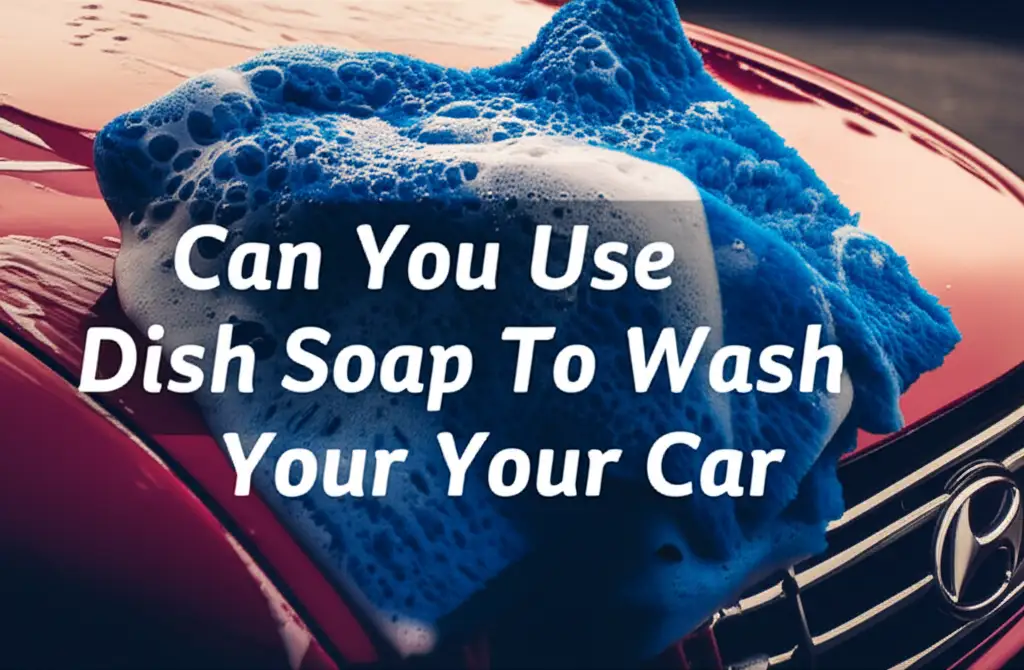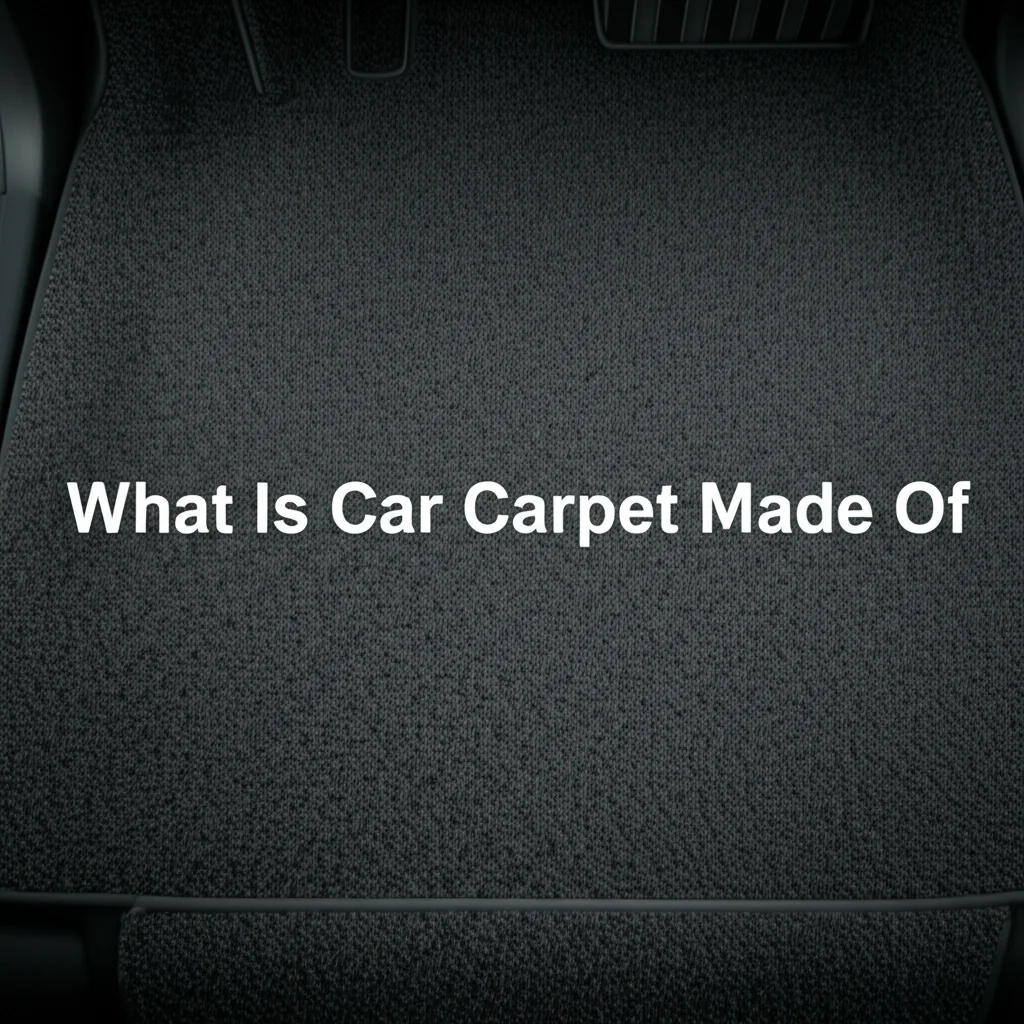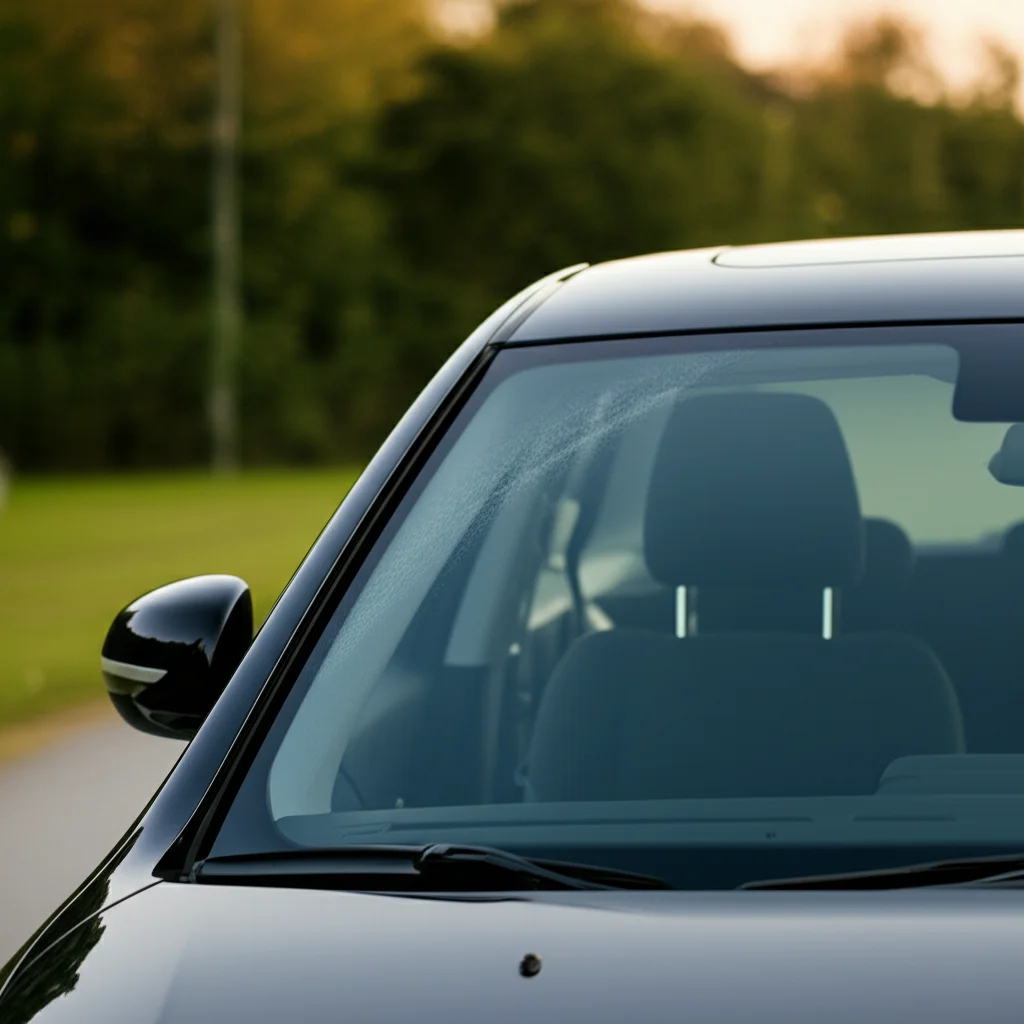· Todd Martin · Car Care · 15 min read
How To Wash Your Car With Dish Soap

Wash Your Car with Dish Soap: A Detailed Guide
Do you wonder if you can use dish soap to wash your car? Many people reach for this common household cleaner when their car needs a quick wash. It seems convenient and effective for cutting grease. However, using dish soap on your car has specific implications.
This article provides a complete guide on how to wash your car with dish soap safely. We will discuss when it is acceptable to use dish soap and when you should avoid it. You will learn the correct steps to minimize potential harm to your vehicle’s paint. We also cover the essential tools you need and important tips for the best results. Understanding the right approach ensures your car stays clean without unnecessary damage.
Takeaway
- Use dish soap for emergency car washes only, not regular cleaning.
- Always dilute dish soap heavily before applying it to your car.
- Rinse your car thoroughly to prevent soap residue and streaks.
- Understand that dish soap strips wax and protective coatings.
- Reapply wax after using dish soap to protect your paint.
Can you wash your car with dish soap? Yes, you can wash your car with dish soap in specific situations, such as removing tough grease or preparing for waxing. However, it is not ideal for regular use as it strips away protective wax and can leave your paint unprotected.
Understanding Dish Soap’s Impact on Car Paint
Dish soap is a powerful degreaser. It removes food grease from dishes very well. This ability makes it tempting for car cleaning. However, car paint is different from dishes. Car paint has a clear coat layer. This layer protects the colored paint underneath.
Car wax sits on top of this clear coat. Wax provides an additional protective barrier. It also gives the car a shiny finish. Wax helps water bead off the surface. This prevents water spots and protects against UV rays. Dish soap’s strong degreasing agents strip away this wax layer. They also remove other protective sealants. This leaves your car’s clear coat exposed.
An exposed clear coat is vulnerable. It can get damaged by sunlight, dirt, and pollutants. Over time, this leads to faded paint. It can also cause paint oxidation. Regular use of dish soap shortens the life of your car’s finish. It might also make your car look dull. Specialized car wash soaps are gentle. They clean the car without removing wax. They are formulated to protect your paint. For most washes, I recommend sticking with products made for cars.
If you are wondering more about this topic, you can read more on whether you can use dish soap to wash your car. Knowing the difference helps you make better choices for your vehicle. Your car’s paint lasts longer with proper care.
When It’s Okay to Use Dish Soap on Your Car
Using dish soap on your car is generally not recommended for routine cleaning. However, there are specific times when it can be a useful tool. Think of dish soap as a special cleaner, not an everyday car shampoo. One primary use is before a major detailing session. If you plan to apply a new coat of wax or sealant, you need a completely clean surface. Dish soap effectively strips old wax and sealants away. This prepares the paint for fresh protection. The new wax will bond better to a clean surface.
Another situation is when you have stubborn stains. Tar, tree sap, or heavy grease spots can be tough to remove. Regular car wash soap might not be strong enough. A small amount of dish soap can help break down these contaminants. Apply it carefully to the affected area. Then rinse it off quickly. This targeted approach minimizes the time dish soap stays on your paint. This reduces the risk of damage to the rest of the car.
Consider using dish soap in emergency situations. For example, if you have no car wash soap available. Or if your car is extremely dirty after a long trip. In these cases, a one-time dish soap wash can be a temporary solution. Always follow up with proper wax application. This restores the paint’s protection. Remember, occasional use is fine. Regular use causes damage. Knowing when it is acceptable saves your car’s finish in the long run. It is important to know if dish soap is okay to wash your car with.
The Right Way to Wash Your Car with Dish Soap
Washing your car with dish soap requires careful steps. This process minimizes potential harm to your vehicle’s paint. Speed and thoroughness are important. Do not let the soap dry on the car. Follow these steps for the best results.
Step-by-Step Car Washing Process
Prepare Your Car:
- Park your car in a shaded area. Direct sunlight causes soap to dry too quickly. This leaves streaks and spots.
- Let the car cool down if it has been in the sun. Warm surfaces also make soap dry fast.
- Gather all your supplies. Having everything ready speeds up the wash.
Rinse Thoroughly:
- Use a hose with a strong spray nozzle.
- Rinse the entire car from top to bottom.
- Remove loose dirt, dust, and debris. This prevents scratching the paint during washing.
- Pay attention to wheel wells and lower panels. These areas collect a lot of dirt.
Prepare the Soap Solution:
- Fill one bucket with clean water. This is your rinse bucket for sponges.
- Fill a second bucket with clean water. This is your wash bucket.
- Add a small amount of dish soap to the wash bucket. About 1 teaspoon per gallon of water is often enough.
- Mix the water gently to create suds. Do not use too much soap. Excess soap is harder to rinse.
Wash the Car Section by Section:
- Start at the top of the car and work your way down.
- Use a clean wash mitt or soft sponge. Dip it into the soap solution.
- Wash one section at a time. Use straight, overlapping strokes. Avoid scrubbing in circles.
- Rinse the wash mitt often in the clean water bucket. This removes dirt from the mitt.
- This prevents transferring dirt back to the car’s surface.
Rinse Each Section Immediately:
- After washing a small section, rinse it immediately with the hose.
- Do not let the dish soap dry on the paint. Dish soap dries quickly and leaves streaks.
- Work quickly around the car, washing and rinsing each part.
- Ensure all soap residue washes away.
Final Rinse:
- Once you wash all sections, give the entire car a final thorough rinse.
- Start from the top and let the water sheet off.
- Check for any remaining soap suds or residue. Rinse until water runs clear.
Dry Your Car:
- Drying is very important to prevent water spots.
- Use clean, soft microfiber towels or a chamois.
- Dry the car immediately after the final rinse.
- Blot the water rather than dragging the towel. This prevents swirls.
- Work from top to bottom. Change towels if they become too wet.
Apply Wax (Crucial Step):
- Since dish soap strips wax, you must reapply a protective layer.
- Apply a car wax or paint sealant. This protects the paint from damage.
- Follow the wax product’s instructions. This step is essential for your car’s long-term protection.
Following these steps ensures a clean car. It also helps protect your car’s finish. Proper technique makes a big difference.
Tools and Materials You Need for a Dish Soap Car Wash
Having the right tools makes any car wash easier and more effective. When using dish soap, specific tools help minimize risks. They ensure a clean finish without causing damage. I always prepare everything before I start. This saves time and frustration.
First, you need a reliable water source and a hose. A strong water flow helps rinse away dirt and soap thoroughly. Attach a good spray nozzle to your hose. A nozzle gives you control over the water pressure and spray pattern. It helps rinse hard-to-reach areas.
You need two buckets. One bucket is for your soap solution. The second bucket is for rinsing your wash mitt. This two-bucket method is a professional technique. It keeps your wash mitt clean. A clean mitt prevents dirt from scratching your paint. Consider adding a grit guard to the bottom of each bucket. A grit guard is a grate that traps dirt. This prevents dirt from mixing back into your wash water. It also helps keep your mitt cleaner.
Choose a soft, gentle wash mitt or sponge. Microfiber wash mitts are excellent. They are soft and absorb a lot of soap and water. They also lift dirt away from the paint surface. Avoid using household sponges or rags. They can be too abrasive. They might trap dirt particles against the paint. This leads to scratches.
Of course, you need dish soap. Select a basic, non-concentrated liquid dish soap. Avoid “ultra” or “concentrated” versions unless you dilute them heavily. Look for soaps without added moisturizers or degreasing agents that are too aggressive. A simple, clear dish soap is best.
Finally, you need drying towels. High-quality microfiber drying towels are ideal. They are very absorbent. They are soft and lint-free. This helps prevent water spots and scratches. Chamois cloths also work well. Have several towels handy. One towel might not be enough to dry the whole car. Using fresh, clean towels for drying is as important as using a clean wash mitt. These essential items make your dish soap car wash safe and effective.
Potential Risks and Downsides of Using Dish Soap
While dish soap can clean your car, it comes with significant risks. Understanding these downsides helps you decide when to use it. The main problem is its harsh chemical composition. Dish soap is designed to strip grease and oil. This is great for dirty dishes. It is not great for car paint protection.
The biggest risk is the removal of your car’s protective wax layer. Car wax protects the paint from UV rays, environmental contaminants, and minor scratches. It also helps water bead and roll off. This prevents water spots. Dish soap dissolves this wax. It leaves your clear coat exposed. An exposed clear coat is more prone to damage. It can oxidize, fade, and show water spots more easily. Over time, this makes your car look older. It also reduces its resale value.
Dish soap can also leave streaks or residue. This happens if you do not rinse it off completely. The residue creates a dull film on your paint. It also attracts dust and dirt. This makes your car look dirty faster. Some dish soaps contain dyes or perfumes. These can sometimes stain lighter paint colors. They can also leave behind a sticky film.
Frequent use of dish soap is particularly harmful. Each wash strips more protection. This speeds up paint degradation. It also makes your car’s surface feel rough. Car wash soaps are pH-balanced. They are gentle on paint. They clean without stripping wax. They also contain lubricants. These lubricants help dirt slide off the paint. Dish soap lacks these benefits. It can increase friction during washing. This raises the risk of micro-scratches. It is very important to understand these risks. Only use dish soap when absolutely necessary. Always reapply wax after using it. This helps to keep your car clean and protected.
Alternatives to Dish Soap for Car Washing
Given the downsides of dish soap, it is wise to explore better alternatives. Many products are specifically designed for car washing. These products offer superior cleaning without harming your paint. They also add a layer of protection. Using proper car wash products ensures your car stays looking its best.
The best alternative is a dedicated car wash soap. These soaps are pH-balanced. This means they are gentle on your car’s finish. They clean dirt and grime without stripping away wax or sealants. Car wash soaps also contain lubricants. These lubricants help your wash mitt glide over the paint. This reduces the risk of creating swirl marks or scratches. They also create a lot of suds. Suds lift dirt away from the surface. This makes rinsing easier. You can find these soaps at any auto parts store. Many car wash soaps also leave a shiny finish.
Another good option is a waterless car wash product. These sprays are perfect for light dirt or quick touch-ups. You spray the product directly onto the car. Then you wipe it off with a microfiber towel. Waterless wash formulas encapsulate dirt particles. This prevents scratching. They also often leave a protective layer. This layer can enhance shine. Waterless washes are great when you do not have access to a hose. They also save water.
Rinseless wash products are similar to waterless washes but use a small amount of water. You mix the concentrated product with water in a bucket. Then you use a wash mitt to clean sections of the car. You do not need to rinse the car with a hose afterward. You just dry it. This method is very efficient. It is also environmentally friendly. Rinseless washes often contain polymers. These polymers provide lubrication and a protective shine.
For tough spots, consider specific detailing sprays. For example, tar and bug remover sprays. These products target specific contaminants. They break down the grime effectively. They do not harm the surrounding paint. They are much safer than using dish soap for spot cleaning. Investing in proper car cleaning products pays off. It protects your car’s appearance. It also maintains its value. Learning how to keep your car clean with the right products is a good investment.
Maintaining Your Car’s Finish After Washing
Washing your car is just one part of car care. Maintaining the finish after washing is equally important. This ensures your car stays protected and looks great for a long time. The steps you take post-wash directly impact paint longevity. I always prioritize this step.
The most critical step after any wash, especially a dish soap wash, is applying wax or a paint sealant. As discussed, dish soap strips protective layers. Applying wax restores this protection. Wax creates a barrier against UV rays, acid rain, bird droppings, and industrial fallout. It also makes your car shine. Apply wax evenly. Buff it off according to the product’s instructions. Regular waxing is key for paint health. Aim to wax your car every few months.
Regular quick detailing sprays also help. These sprays are great for maintaining the shine between washes. They remove light dust and fingerprints. They also boost the existing wax layer. Use a quick detailer with a clean microfiber towel. Spray a small amount on a panel. Then gently wipe it clean. This keeps your car looking fresh. It also helps prevent dirt buildup.
Proper drying techniques prevent water spots. Always dry your car immediately after washing. Use soft, absorbent microfiber towels. Blotting is better than dragging. This prevents swirl marks. Water spots contain minerals that can etch into your paint. Especially if they dry under the sun. A clean and dry surface resists contaminants better.
Finally, store your car properly. Parking in a garage or under a carport protects your car from harsh elements. This includes direct sunlight, bird droppings, and tree sap. These elements can damage paint over time. If outdoor parking is your only option, consider a car cover. A good car cover offers protection against the environment. Following these maintenance tips extends your car’s paint life. It keeps your car looking new.
FAQ Section
Q1: How much dish soap should I use to wash my car? A: Use a very small amount, typically about 1 teaspoon of basic liquid dish soap per gallon of water. Over-diluting helps reduce its harsh effects. Do not use more than necessary. Too much soap is harder to rinse. Excess soap can leave residue.
Q2: Will dish soap damage my car’s paint permanently? A: Dish soap does not permanently damage the paint itself with single, occasional use. Its main effect is stripping protective wax and sealants. This leaves the paint vulnerable to damage from the environment. Consistent or excessive use will lead to dulling or oxidation over time.
Q3: How often can I wash my car with dish soap? A: You should wash your car with dish soap only rarely. Use it for specific tasks like removing old wax before reapplication, or for very tough grease spots. For regular washes, use dedicated car wash soap. This preserves your car’s protective coatings.
Q4: What kind of dish soap is best for car washing? A: A basic, clear liquid dish soap without added moisturizers, perfumes, or aggressive degreasing agents is best. Avoid “ultra” or “concentrated” versions unless you significantly dilute them. Simple formulas are less likely to leave residue or cause issues.
Q5: Do I need to reapply wax after washing with dish soap? A: Yes, absolutely. Reapplying wax or a paint sealant after washing with dish soap is crucial. Dish soap removes your car’s existing protective layers. Waxing restores this protection. This shields your paint from UV rays and contaminants.
Q6: Can dish soap remove tar and bug splatter from my car? A: Yes, dish soap can help remove tar and bug splatter due to its degreasing properties. Apply a slightly more concentrated solution directly to the affected area. Let it sit for a very short time. Then rinse thoroughly and immediately. For very stubborn spots, a dedicated tar and bug remover is safer.
Conclusion
Washing your car is an important part of vehicle maintenance. While dish soap offers a convenient and accessible option, it is not ideal for regular use. Understanding its properties tells us it excels at stripping grease. This means it removes beneficial wax and protective sealants from your car’s paint. This leaves your paint vulnerable to environmental damage over time.
You can use dish soap effectively for specific tasks. These tasks include preparing your car for a fresh wax application or tackling stubborn grease spots. Always follow the detailed steps outlined in this guide. This includes proper dilution, immediate rinsing, and thorough drying. Most importantly, always reapply a protective wax layer after a dish soap wash.
For everyday cleaning, specialized car wash soaps are the superior choice. They clean gently while preserving your car’s finish. They ensure your vehicle remains shiny and protected. Make informed decisions about your car care products. Your car’s long-term appearance and value depend on it. Keep your car looking its best with the right cleaning methods. Choose the appropriate soap for the job to maintain your car’s beauty and integrity.





